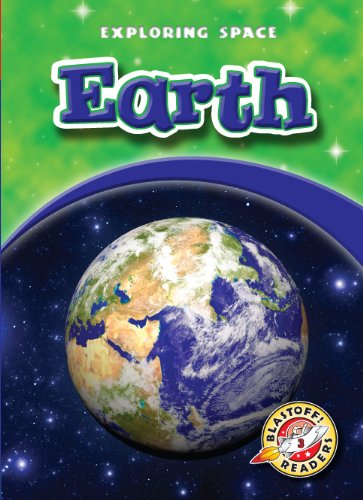-
The Life Cycle of a Turtle
Colleen Sexton
Library Binding (Bellwether Media, Aug. 8, 2010)A turtle sensing danger will pull its head, legs, and tail inside of its shell. This book teaches children about the life cycle of a turtle. Young readers will learn how turtles hatch from eggs, avoid predators, and live a very long time! K
K
-
Cicadas
Christina Leaf
Library Binding (Bellwether Media, Aug. 1, 2017)The last insect to need a megaphone would be a cicada. No bug is louder than a male cicada buzzing for a female! This title shouts cool cicada facts at kids, including that cicada noisemakers are called tymbals and that nymphs can stay underground for up to 17 years! G
G
-
Astronauts
Colleen Sexton
Library Binding (Bellwether Media, Jan. 1, 2010)People must go through difficult training to become astronauts. Kids will learn how astronauts prepare for life in space, complete their missions, and survive above the atmosphere. J
J
-
Bumblebees
Patrick Perish
Library Binding (Bellwether Media, Aug. 1, 2018)A bumblebee colony is a busy place! The queen bee builds the nest and lays hundreds of eggs. Worker bees float from flower to flower, gathering nectar and helping flowers grow. In this book for beginning readers, students will learn all about the complex world of bumblebees. Photo labels visually define glossary terms and other important words. Captions identify insect behaviors. Picture glossaries offer visual supports. Size diagrams show the actual size of insects. Labeled bubbles call out favorite foods. Labeled bubbles identify insect life spans. J
J
-
Grasshoppers
Patrick Perish
Library Binding (Bellwether Media, Aug. 1, 2017)If insects held their version of the Olympic games, a grasshopper would for sure make the podium for the long jump event. The long-legged insect can jump forward 20 times its body length! Elementary readers will make leaps in their understanding of grasshoppers in this book. H
H
-
Sinkholes
Rebecca Pettiford
Library Binding (Bellwether Media, Jan. 1, 2020)What may look like a leaning mailbox or a poorly fitted window sill may actually be a warning of danger below! In this engaging title, young readers will learn all they need to know about these surprise disasters. Special features such as a map, a profile, a severity chart, and a formation graphic offer even more information about these surprise disasters! N
N
-
Damselflies
Christina Leaf
Library Binding (Bellwether Media, Aug. 1, 2017)Damselflies could very well be part of the inspiration for the term bug-eyed. Their compound eyes are huge and protruding! Young readers will look with amazement at damselflies flying, eating, molting, and more in this insect close-up. A staring contest is on! L
L
-
Rattlesnakes
Colleen Sexton
Library Binding (Bellwether Media, Jan. 1, 2010)Constantly growing, rattlesnakes are often shedding their skin and gaining new rattles on their tail. Discover what these noisy creatures look like, the places they dwell, and how they strike unsuspecting prey. I
I
-
Striped Skunks
Chris Bowman
Library Binding (Bellwether Media, Jan. 1, 2016)Small, fuzzy, and slow, striped skunks make a big stink in the animal world. One single smelly spray can repel even the scariest predator from attacking! These black-and-white mammals are resilient enough to survive snakebites and bold enough to ransack a beehive. Beginning readers will love nosing their way through this book about North American striped skunks! L
L


